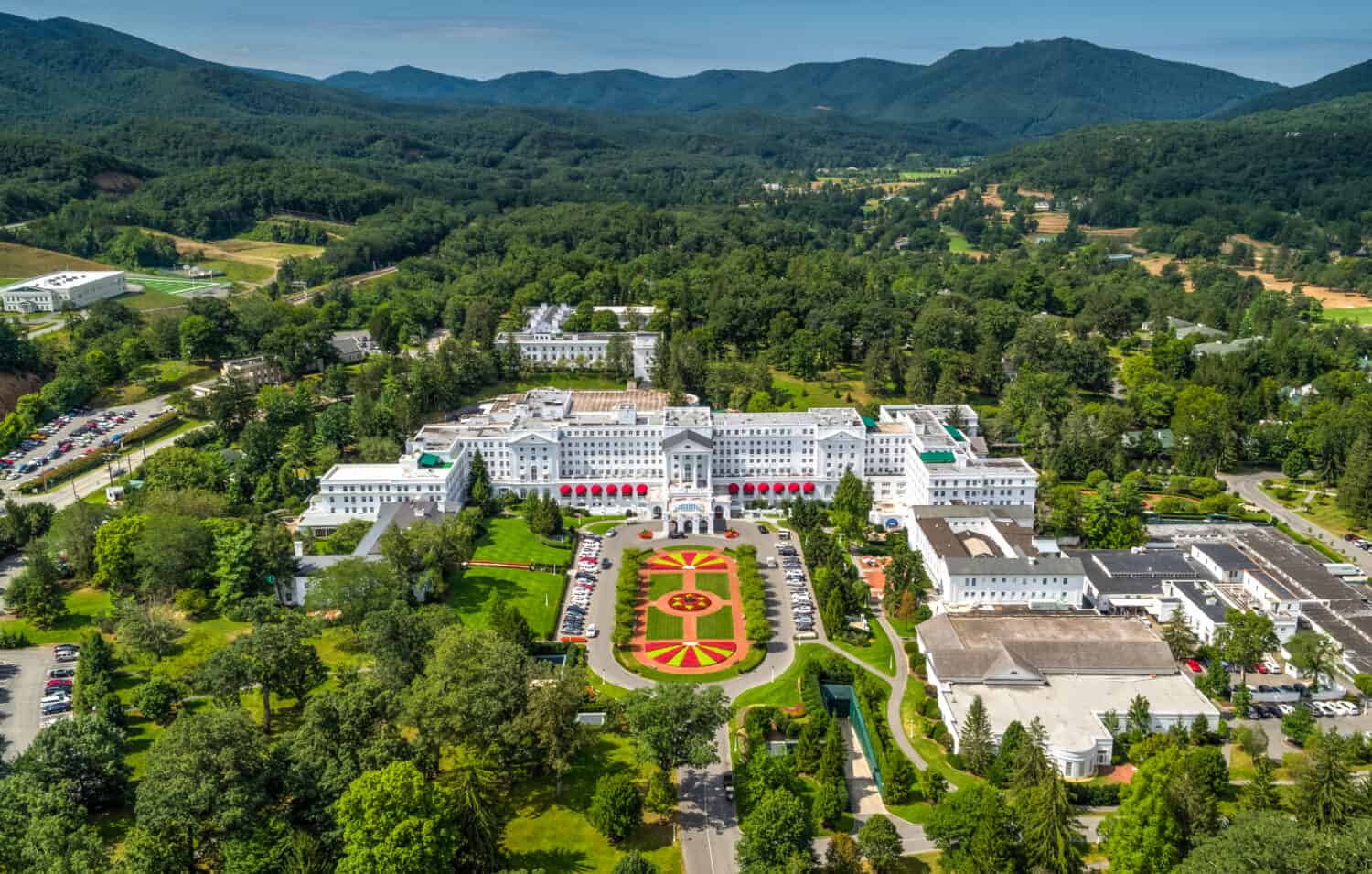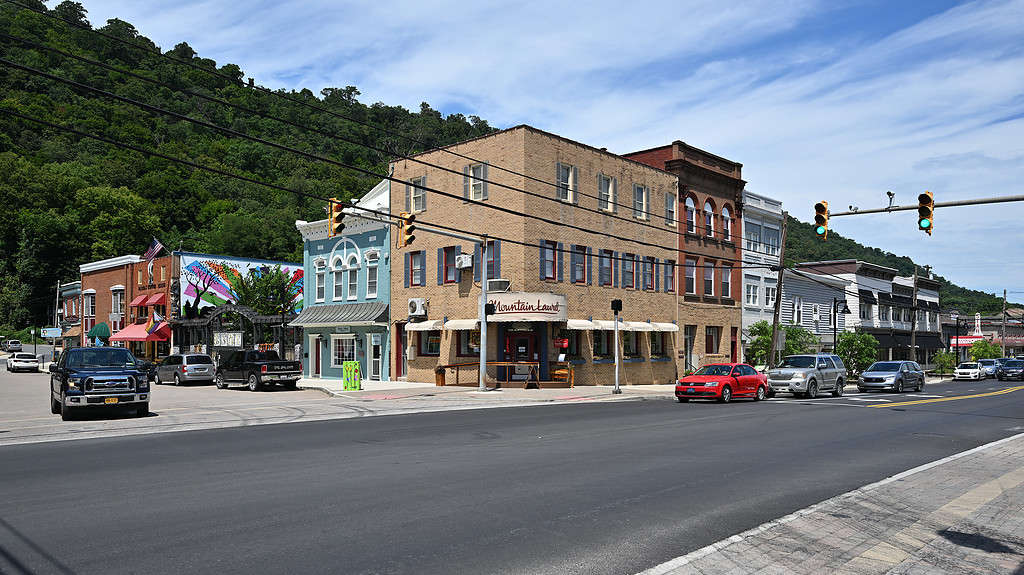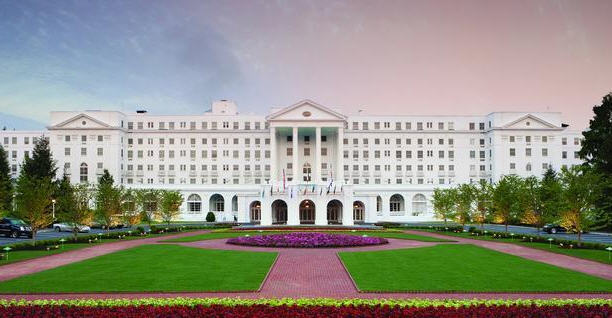Some people like the idea of warm water any time of the year. This blog is for all such people looking for a warm water body in all seasons. A hot spring is a body of water with a warm temperature throughout the year.
There are many hot springs in the United States. However, if you are native to Washington, D.C., you can visit several hot springs within driving distance.
In this blog, we will learn about the formation of a hot spring, its importance in the environment, and whether they are safe or not. Moreover, you will discover all the top hot springs sites in Washington D.C., so you can plan a tour with your loved ones.

What Is A Hot Spring? How Are They Formed?
A hot spring, or a thermal spring, is a naturally occurring warm body of water heated due to the Earth’s inner core. This phenomenon is known as geothermally heated, which is why hot springs are also called geothermal springs.
However, there is one interesting fact related to the hot spring. There is no widely accepted definition that describes its process correctly. While some people call it a warm body of water, a few researchers disapprove of this and advise not to define a hot spring as a warm spring. Similarly, many studies have regarded it as a body of water with a certain temperature, but the temperatures vary in most definitions.
We can agree that a hot spring is a natural body of water with slightly raised temperatures, which are warmer even during the winter. So, how do they form? Hot springs form through the magma or through radioactive rocks nearby.
When the Earth’s core heats a body of water, this is geothermally-heated water. This body of water is usually located near volcanic areas. When the water passes through the heated rocks, its temperature rises so high that people may die if they step into the heated water. The water finds its way back through a small pressure. The amount of underground pressure determines the flow of the water back to the surface.
However, in non-volcanic areas, the temperature of the rock is slightly raised due to the Magma (a semi-molten or molten layer found beneath the Earth through which rocks are made). On top of that, when you increase the depth of these rocks, the temperature rises significantly with a direct relation. Hence, if the water penetrates the core enough to reach such rocks, it traces its way back upward with a small pressure. This constitutes the formation of hot springs.
Usually, the water comes through rainwater or the groundwater already present. Therefore, it can take days for the hot springs to form.
Is There A Difference Between Geysers And Hot Springs?
Yes, there is. A hot spring is a naturally occurring body of water that has a maximum temperature of 40 degrees centigrade. In contrast, a geyser is a type of hot spring that releases boiling water in the form of jets. The process is the same for the geysers as well as the hot springs. However, in volcanic areas, geysers are more commonly created rather than the hot springs.
A basic difference between the two is that with hot springs, the water gently releases itself from the core of the Earth through cracks. Geysers feature trapped water, and the high pressure forces the boiling water out of the surface of the Earth in a jet. Plus, this high-pressure water is underground for years, which is why when it erupts, it might create a hot and boiling steam jet.
Are There Hot Springs In Washington D.C.?

The Greenbrier Resort has been open since 1778 and is one of the best hot springs near Washington DC.
©Dynamic Photography/Shutterstock.com
The United States has more than 1,610 hot springs. Out of this huge number, there are 70 that have been accessible. You can easily take a day off of work and decide which hot springs near Washington D.C. you should visit.
The best thing about visiting a hot spring is that it brings its own adventure to the trip. This is because many of the hot springs are located far away from the public. Hence, access to them comes with days of hiking and camping. Some other hot springs are part of a commercial spa.
Top 3 Hot Springs To Visit In Washington D.C.
You can visit many spots to satisfy your need to witness a hot spring. However, this blog will discuss the top 3 that check off all the boxes.
1. Capon Springs, West Virginia

The Main House at Capon Springs Resort, West Virginia.
©The original uploader was Caponer at English Wikipedia., CC BY-SA 3.0 <https://creativecommons.org/licenses/by-sa/3.0>, via Wikimedia Commons – Original / License
Time to reach: Drive of around 2 hours from D.C.
Accommodation: 14 unique cottages and 115 room capacity
Highest temperature: 38 degrees or 102 Fahrenheit.
Capon Springs is located in the foothills of the Allegheny Mountain range in West Virginia. Just a two-hour drive from D.C., you can pack your bags for an adventurous day ahead.
This resort is home to one of the finest hot springs experiences in the area. There are no chemicals in the warm body of water because this is a Roman-inspired spring. The staff cleans each bathtub after a person takes a bath, so you can guarantee that you will have a clean and hygienic swim in the hot springs. The water is 102 Fahrenheit, and the bathtub is lined with tiles to give you an exquisite feel.
Apart from the hot springs, there is a resort with a 115-room capacity. It has 14 different cottages to host big gatherings and accommodate huge crowds. If you plan on staying the night, you will have a bunch of outdoor activities to keep you company. From hiking trails and pool houses to fish ponds and gold clubs, you can explore it all on a fun-filled day at this resort.
2. Berkeley Springs, West Virginia

Buildings on the corner of Fairfax St and Washington St in Berkeley Springs, West Virginia. Town Motto is “America’s First Spa”.
©G. Edward Johnson, CC BY 4.0 <https://creativecommons.org/licenses/by/4.0>, via Wikimedia Commons – Original / License
Time to reach: Drive of around 2 hours and 15 minutes from D.C.
Accommodation: Rooms at the Bathhouses
Highest temperature: 102 Fahrenheit
This hot spring is also known as America’s Spa. and is in a small town. in a small town that is a couple of hours away from D.C. Its biggest flex is that George Washington used to visit this small town frequently.
The hot mineral spring sits right in the center of the square. It receives water from five different sources and is rich in mineral content. This could be therapy if you have an aching joint or a troubling back.
Apart from the central hot spring, there are two bathhouses that host spa treatments for visitors. The historic Roman bathhouse offers nine walk-in tubs in the private rooms. You, too, can book an appointment with the bathhouse and enjoy a private bath in crystal-clear water heated to the right temperature. If you are seeking decent accommodation for an overnight stay, you can find rooms for both men and women at the bathhouse.
Moreover, you can find many restaurants, hotels, and hiking trails around this central square. It can give you the comfort and adventure you need from the trip.
3. The Greenbrier, West Virginia

The Greenbrier Resort has been open since 1778.
©Richard Rosendale, CC BY-SA 3.0 <https://creativecommons.org/licenses/by-sa/3.0>, via Wikimedia Commons – Original / License
Time to reach: Drive of around 4 hours from D.C.
Accommodation: Various rooms and guest houses
Highest temperature: 100 Fahrenheit
You probably must have heard about Greenbrier, West Virginia’s healing waters. According to travel experts, the spa is known as one of the best spas in America and in the world. Located just four hours from D.C., it’s perfect for a day trip from the nation’s capital. The secret of the healing waters is that they feature sulfur, a healing charm for achy joints and back pain.
The temperature is set to 100 degrees Fahrenheit, a perfect setting, neither too hot nor too cold. The spring gets the water from two sources, the sulfur-rich water comes from the ground and seeps into the steel tub, while the natural mineral water finds its way into the whirlpool tub to give you a refreshing and stress-free bath.
If you want to get the most out of your experience, you will try different varieties of soaking options that they offer. For example, you can head to the Swiss Shower to let your worries wash away or try the detox bath. In addition, you can soak in a private bath away from prying eyes. You can also stick to the natural Alvon Springs, which are popular and in demand.
As for accommodation, various rooms are available for people looking to plan a long weekend at the resort. They also offer spa packages for visitors in case you need to expand your options for the trip.
Is It Safe To Swim In Hot Springs?

Yes, you can swim in hot springs if you know the risks and safety concerns.
©Flystock/Shutterstock.com
Yes, swimming in hot springs is safe if you know the risk and safety tips of swimming in warm waters.
Hot springs usually have a temperature between 35 degrees to 40 degrees. If you stay in the waters for too long, you might risk getting hyperthermia. This could lead to further problems and diseases in the human body. The high temperature of these hot springs can even cause second and third-degree burns if people prolong their stay in the water.
Moreover, if the hot spring is a natural body of water, its temperature may rise from warm to hot within seconds. This happens because of the sudden change in the geothermal heat.
Here are some safety tips that you should follow;
- Check the temperature of the hot springs before diving into one.
- Ensure that you are not allergic to sulfur, as hot springs often have a high sulfur content.
- Plan according to the weather, and bring the right gear if you plan on camping and hiking on trails. If you pick hiking trails as your next adventure, trek on the designated trails.
- Do not stay in the water too long. Similarly, take breaks between your swims. Try to catch a 15-minute break before you decide to go out in the warm waters again.
- Stay hydrated and drink a lot of water before and after you dive into the hot spring. The high temperature can drain your water levels.
- If you have preexisting health conditions of high blood pressure or cardiovascular issues, consult your doctor. The same goes for women who are pregnant.
- If you have any open wounds, try and cover them. Various bacteria in hot springs might get attracted to open wounds and cause potential infection.
Summary Of The 3 Best Hot Springs Near Washington D.C.
| Rank | Hot Spring | Location |
|---|---|---|
| 1 | Capon Springs | Capon Springs, West Virginia |
| 2 | Berkeley Springs | Berkeley Springs, West Virginia |
| 3 | The Greenbriar | White Sulphur Springs, West Virginia |
Thank you for reading! Have some feedback for us? Contact the AZ Animals editorial team.







